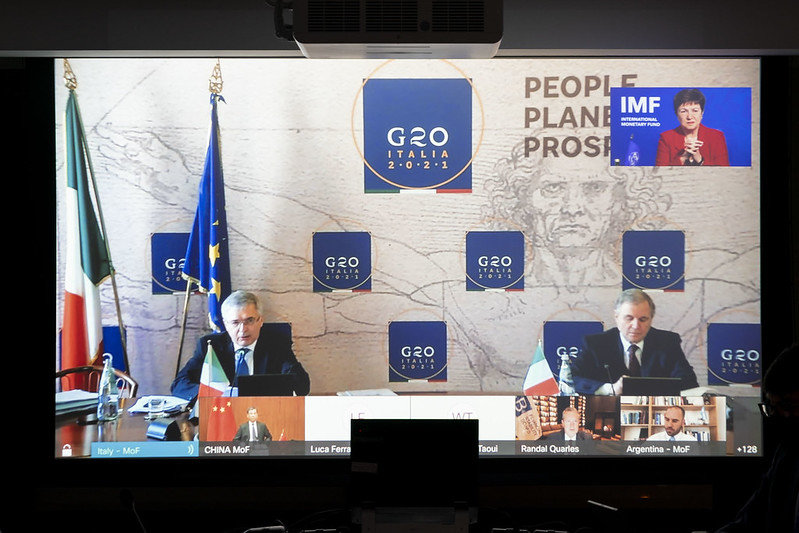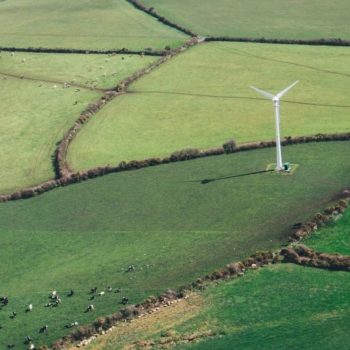From its onset, the COVID-19 crisis had the potential to either drive the structural macrofinancial transformative recovery needed to deliver global decarbonization, or entrench the systemic issues which preceded the crisis.
2021 closes with this same fraught potential. A testament to the nature of political and socioeconomic change, it takes the form of uneven and combined developments which can only be understood in concert, and with hindsight.
As we approach two years since the onset of the pandemic, this moment marks a critical juncture for assessing global green structural transformation and continuing to push the agenda forward.
Decarbonization is a project to undertake a planned and coordinated unwinding of the fossil economy. Concrete investments, disinvestments, regulations, planning, and public economic coordination, whether as tools or processes, work in harmony to manage the decline of fossil fuels and the rollout of a clean economy. Structural and persistent deficiencies in the macroeconomic architecture preceding the COVID-19 crisis are obstacles to this.
Before the crisis, the global economy was in a state of secular stagnation, where underinvestment drives stagnation which further depresses investment. It was subject to systemic vulnerabilities such as overstretched supply chains, exposed to macrofinancial instability, driven by financialization and underinvestment in the real economy and public infrastructure. Developing countries suffered these conditions, as well as structural limits to fiscal capacity, including unsustainable debt without recourse to restructuring or relief; vulnerability to capital flight; issues of “hot” portfolio flows; and diminishing international fiscal transfers as political austerity worsened post-2008.
Another primary challenge facing public and private credit allocation and fiscal spending is that investment is not yet systematically Paris-aligned. Policies and governance systems are needed to direct public spending and private credit allocation away from fossil fuels and towards decarbonization. Finally, public institutions from central banks to the International Monetary Fund (IMF) have yet to embrace the agenda of creating the conditions for deep decarbonization.
As the IMF’s latest World Economic Outlook Report showed, global economic recovery diverges between developed and developing countries, and is anemic. There are signs the recovery is losing momentum and is fragile in the face of a prolonged pandemic, the return of fiscal austerity, and political, policy, and economic responses. Moreover, using 2020 data, the Global Recovery Observatory characterized only 21.7% of rescue and recovery spending globally as “green.” This is fractious political terrain going into next year and the rest of a decade that must be about deep decarbonization.
Yet, the moment has its openings, which leaves critical outstanding questions for transformative recovery.
- Central banks, especially in the G20, injected trillions of dollars of liquidity out of nothing into the financial system and engaged in monetary financing of government spending. Problematically for future macrofinancial policymaking, this monetary financing in many places remains unacknowledged by governments and taboo as a tool for enabling public investment. More positively, central bankers are increasingly forthright in urging its take-up. As we move into a more difficult terrain of matching rescue spending with ambitious and sustained recovery spending and engaging in decarbonization, will finance ministries and central banks engage in tighter and more outright monetary fiscal coordination?
- Similarly, around the world nascent regulatory frameworks are emerging that will enable states to direct private credit allocation for climate safety. From this, emerges the risk of regulatory fragmentation and waning ambition in the face of opposition to both credit steering and robust standards for what constitutes “green.” The G20 produced a Roadmap for reform in 2021, and the Basel Committee is now discussing climate change. Will robust global frameworks emerge?
- And finally, one of the major victories of this year was the $650 billion allocation of IMF Special Drawing Rights (SDRs). This constitutes both a much-needed emergency liquidity injection for developing and emerging market countries, and a potential revolutionary breakthrough for transforming the international macrofinancial system in the longer-term. Proposals abound for developed countries to reallocate their allotment towards climate and resilience spending, and for SDR issuance to become a regular and systemic pillar of the macrofinancial architecture. This would transform the capacity for developing countries to engage in deep decarbonization and build socio-economic resilience. Will this SDR allocation be the opening to such systemic transformation?
An extended version of this analysis will appear in E3G’s Recovery Report newsletter next week. The Recovery Report newsletter takes stock on political and economic developments against the the goal of a global recovery and transformed macrofinancial system that can deliver the investment needed for a global climate transition. To subscribe to the newsletter, email recovery.report@e3g.org

